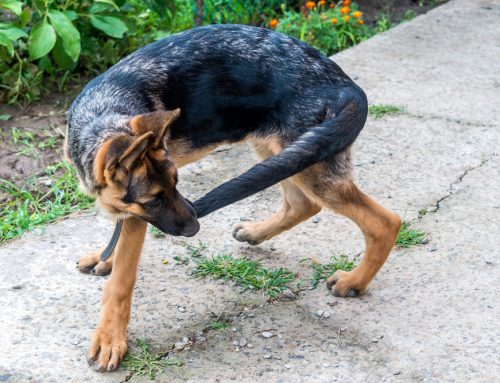Hiking and camping are great ways to get exercise and enjoy fresh air and nature and, as a dog owner, you may want to include your furry pal in the adventure. Our Fremont Animal Hospital team knows dogs can be great companions on outdoor trips, and we provide guidelines for camping and hiking with your four-legged friend.
Schedule a veterinary appointment
Before you take your dog on a camping or hiking adventure, ensure they are physically ready. Schedule a wellness exam at our hospital, so we can ensure they are healthy and in tip top shape. In addition to thoroughly evaluating your pet’s health, a veterinary visit is important to address:
- Vaccinations — Ensure your pet is up to date on their core vaccines, and ask our team about optional vaccinations, such as leptospirosis, Lyme disease, or Bordetella, since your pet will be out and about.
- Parasite prevention — Before setting out on the trail, ensure your pet is protected from parasites, such as heartworms, ticks, fleas, and intestinal worms.
- Microchip — When hiking and camping with your dog, proper identification is important so they can be returned should they go missing. In addition to a collar and identification tags, your pet should be microchipped, so they have permanent identification that can’t be lost or removed.
Find a dog-friendly site
Not all hiking trails and campsites allow dogs. Call ahead or check the website to ensure the location permits dogs. Most national parks welcome dogs, but some limit them to certain spots, such as the campground, parking lot, and paved areas. In addition, check the site’s leash laws. Most sites require that dogs be restrained at all times, but some allow them off-leash if they reliably return when called. Check the rules before you hit the road to prevent an unexpected fine.
Follow appropriate trail etiquette
When hiking with your dog, you must respect others and be environmentally sensitive. Trail etiquette tips include:
- Keep your dog controlled — Keep your dog on a leash or under strict voice command at all times. Your dog should remain on a leash if they:
- Don’t immediately come when called
- Invade other people’s and dogs’ space
- Chase wildlife
- Veer off the trail
- Yield the right of way — When you meet other people on the trail, especially runners, bicyclists, and horseback riders, you and your dog must yield the right of way by stepping off the trail and allowing them to pass.
- Avoid spooking horses — Horses are easily spooked by unfamiliar dogs. When meeting a horseback rider, move your dog well off the trail, and ensure they stay calm and don’t bark.
- Remain on the trails — When hiking, you and your dog must remain on the trails and practice minimum impact. Never take shortcuts or make new trails.
- Clean up after your dog — Always bag and dispose of your dog’s waste appropriately.
- Avoid wildlife — Never disturb wildlife. Observe animals from a distance, and ensure your dog doesn’t bark at or chase them.
Pack for your dog
When packing your backpack, include essential supplies for your dog, including:
- Food and treats — Pack your dog’s usual food and treats sealed in air-tight containers that wild animals can’t access.
- Water — Bring water and a portable water bowl so you can easily offer your dog a drink.
- Plastic bags — Bring a good plastic bag supply for removing your dog’s waste, and ensure you can store the used bags until you can dispose of them properly.
- Leash and harness — Bring your dog’s usual leash and harness plus an extra set in case the first set breaks.
- First aid kit — Pack a first aid kit that includes a first aid guide, saline, disinfectant wipes, antibiotic ointment, antihistamine—ensure you know your dog’s appropriate dose—bandage material, tweezers, and bandage scissors.
- Tether — Pack a tether so you can easily restrain your dog while at the campsite.
- Towel — A towel is useful if your dog gets wet or muddy.
- Brush or comb — A brush or comb will help remove burrs and foxtails and check for ticks.
Keep your dog cool when hiking

Dogs don’t sweat like humans and are susceptible to heatstroke, because they can’t easily cool themselves. Senior pets, overweight pets, and brachycephalic breeds (e.g. pugs, bulldogs, boxers) are at increased risk. When hiking with your four-legged friend, ensure they stay comfortable and cool with the following precautions:
- Keeping your dog hydrated — Offer your dog a drink every 30 minutes to an hour to ensure they stay well hydrated.
- Taking breaks — Take frequent breaks in the shade to let your dog cool down.
- Monitoring your dog — Monitor your dog for heatstroke signs, such as lethargy, excessive panting or drooling, red mucous membranes, and difficulty breathing.
- Using a cooling vest — Cooling vests can help keep your furry pal cool on hot, humid days.
Following these guidelines should help you enjoy your outdoor adventure with your dog. Contact our Fremont Animal Hospital team to schedule a wellness exam for your furry pal before your next camping or hiking trip.






















Leave A Comment